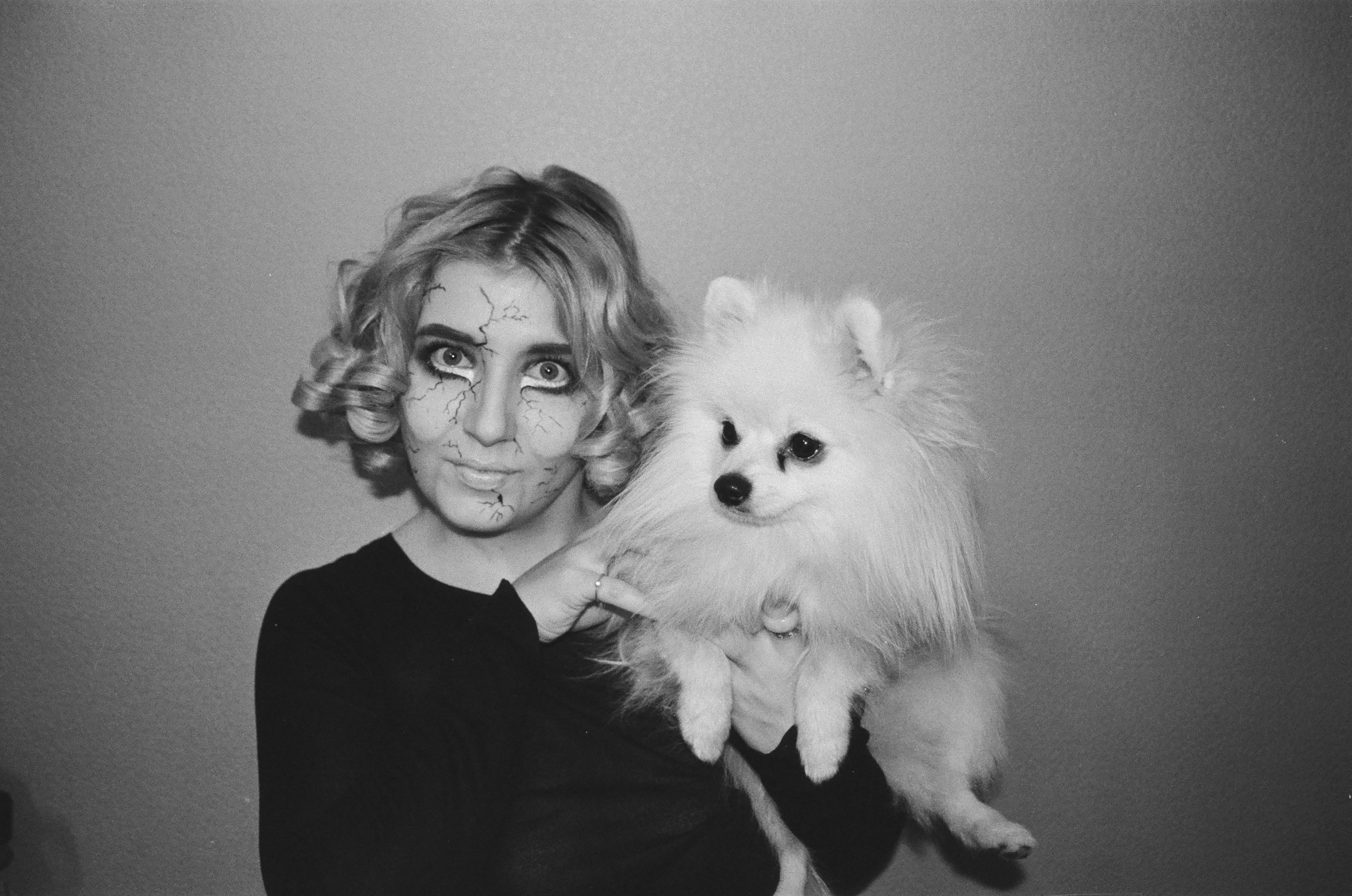Unleashing The Truth About Scary Dogs: Debunking Myths And Understanding Canine Behavior
When it comes to scary dogs, our minds often wander to images of snarling beasts or aggressive behavior. But are these perceptions based on facts, or are they fueled by fear and misinformation? Scary dogs, as they're often labeled, are more than just their reputation. In this article, we'll dive deep into the world of these misunderstood creatures and uncover the truth behind their behavior.
Imagine walking down a quiet street, and suddenly you hear the sound of barking. Your heart races, and you start to feel uneasy. That's the power of perception when it comes to scary dogs. But what if I told you that most of these so-called "scary" dogs are simply misunderstood? Dogs, like humans, have their own personalities, and labeling them as scary can be misleading.
This article will explore the myths, facts, and everything in between about scary dogs. We'll uncover the reasons behind their behavior, how to approach them safely, and why they deserve a second chance. So, buckle up and let's get started!
Read also:Rare King Von Autopsy Picture Revealed A Tragic Aftermath
Table of Contents
- Understanding Scary Dogs
- Common Misconceptions About Scary Dogs
- Breeds Often Labeled as Scary
- Why Dogs Act Aggressive
- How to Approach a Scary Dog
- Training and Socialization
- Scary Dogs and Children
- Scary Dogs in Pop Culture
- Real-Life Stories: Scary Dogs Turned Good
- Conclusion: Rethinking Scary Dogs
Understanding Scary Dogs
First things first, what makes a dog "scary"? Is it their size, their bark, or their breed? The truth is, there's no one-size-fits-all answer. Scary dogs, as they're often called, can vary greatly in appearance and behavior. Some may bark loudly, while others might have a more intimidating presence. But what's important to remember is that most of these behaviors are learned or triggered by external factors.
Let's break it down. Dogs, no matter their breed, are creatures of habit. They respond to their environment, and if that environment is filled with fear or aggression, chances are they'll mirror those emotions. Understanding the root cause of their behavior is key to addressing the issue. Whether it's fear, territorial instincts, or even past trauma, every dog has a story to tell.
And hey, don't forget that dogs are pack animals. They rely on their human counterparts to guide them and set the tone for their behavior. So, if you're dealing with a so-called scary dog, take a step back and ask yourself: What's really going on here?
Common Misconceptions About Scary Dogs
There are a ton of myths floating around about scary dogs, and it's time to set the record straight. One of the biggest misconceptions is that certain breeds are inherently dangerous. Take Pit Bulls, for example. They've been labeled as "scary" for years, but the truth is, they're one of the most loving and loyal breeds out there. The problem lies in how they've been portrayed in the media and, unfortunately, how some people have treated them.
Another myth is that big dogs are always scarier than small ones. Wrong again! Size doesn't determine a dog's temperament. Some of the smallest dogs can be the most territorial, while larger breeds might be the friendliest. It all comes down to individual personality and upbringing.
And let's not forget about the myth that scary dogs are always aggressive. In reality, many dogs labeled as "scary" are simply fearful or anxious. Their behavior might come across as aggressive, but in reality, they're just trying to protect themselves or their territory.
Read also:Things To Do In Bozeman Mt A Comprehensive Guide To Adventure Culture And Relaxation
Breeds Often Labeled as Scary
Now, let's talk about the breeds that often get a bad rap. You've probably heard of Pit Bulls, Rottweilers, Dobermans, and German Shepherds being labeled as scary dogs. But why is that? Is it because of their size, their strength, or their reputation? Let's take a closer look:
- Pit Bulls: Often misunderstood, Pit Bulls are known for their loyalty and affection. They're actually great with kids and make excellent family pets.
- Rottweilers: These guys are all about protection. They're fiercely loyal and will do anything to keep their family safe. But that doesn't mean they're scary!
- Dobermans: Known for their sleek appearance and protective instincts, Dobermans are often labeled as scary. But in reality, they're incredibly intelligent and loving.
- German Shepherds: These working dogs are often seen as scary due to their role in law enforcement. But they're also one of the most versatile and trainable breeds out there.
Remember, it's not the breed that makes a dog scary—it's the way they're raised and treated. Every dog deserves a chance to show their true colors.
Why Dogs Act Aggressive
So, why do some dogs act aggressive? Is it nature or nurture? Turns out, it's a bit of both. Aggression in dogs can stem from a variety of factors, including fear, anxiety, territorial instincts, and even past trauma. Let's break it down:
- Fear: Dogs that feel threatened might act aggressively as a defense mechanism. It's their way of saying, "Stay back, I'm scared!"
- Anxiety: Just like humans, dogs can suffer from anxiety. This might manifest as aggressive behavior if they're feeling overwhelmed or stressed.
- Territorial Instincts: Some dogs are naturally protective of their space. If they feel like their territory is being invaded, they might act aggressively to ward off the threat.
- Past Trauma: Dogs that have experienced abuse or neglect might exhibit aggressive behavior as a result of their past experiences.
Understanding the "why" behind a dog's behavior is crucial in addressing the issue. It's not about labeling them as scary—it's about helping them overcome their fears and anxieties.
How to Approach a Scary Dog
Approaching a dog that seems scary can be intimidating, but there are ways to do it safely. First and foremost, always respect the dog's space. If they're barking or growling, give them some distance and avoid making direct eye contact. Here are a few tips:
- Stay calm and composed. Dogs can sense fear, and it might escalate the situation.
- Avoid sudden movements. Slow, deliberate actions are key when approaching a dog that seems scared or aggressive.
- Don't reach out immediately. Let the dog get comfortable with your presence before attempting to pet them.
- Use a soft, reassuring voice. Talking to the dog in a calm tone can help them feel more at ease.
And remember, if you're ever in doubt, it's always better to err on the side of caution. Safety first, folks!
Training and Socialization
One of the best ways to address aggressive or fearful behavior in dogs is through training and socialization. Early exposure to different environments, people, and other animals can help dogs become more confident and less reactive. Here are some tips:
- Enroll your dog in obedience classes. These classes can teach them important commands and help them learn how to behave in different situations.
- Introduce them to new environments gradually. Take them to parks, pet-friendly stores, and other places where they can safely interact with others.
- Expose them to different types of people. Dogs need to learn that not all humans are the same, and that's okay!
- Use positive reinforcement. Reward good behavior with treats, praise, or playtime. This will encourage them to repeat the behavior in the future.
Training and socialization take time and patience, but the results are worth it. A well-trained, socialized dog is less likely to exhibit aggressive or fearful behavior.
Scary Dogs and Children
When it comes to scary dogs and children, safety is paramount. Kids can be unpredictable, and their actions might trigger a dog's fear or aggression. That's why it's important to supervise interactions between children and dogs, especially if the dog is known to be reactive. Here are a few tips:
- Teach children how to approach dogs safely. They should always ask permission before petting a dog and avoid sudden movements.
- Supervise all interactions. Never leave a child alone with a dog, especially if the dog has a history of aggressive behavior.
- Set boundaries. Dogs need their space, and children should respect that. Teach kids to recognize when a dog needs a break.
- Encourage positive interactions. Playtime and training sessions can help build a bond between children and dogs, reducing the likelihood of fear or aggression.
With the right guidance, scary dogs and children can coexist peacefully. It just takes a little extra effort and understanding.
Scary Dogs in Pop Culture
Pop culture has played a significant role in shaping our perceptions of scary dogs. From Cujo to the dogs in "The Omen," these creatures have been portrayed as menacing and dangerous. But is that really fair? Let's take a look at some of the most famous scary dogs in movies and TV:
- Cujo: The classic Stephen King novel turned movie about a rabid St. Bernard. Cujo's story is one of fear and tragedy, but it also highlights the importance of understanding dog behavior.
- The Hound of the Baskervilles: This Sherlock Holmes classic features a legendary hound that's both terrifying and mysterious. While it's a fictional story, it speaks to our deep-seated fear of the unknown.
- The Omen: The demonic dogs in this horror film are the stuff of nightmares, but they also remind us of the power of perception. Are they really scary, or are we just afraid of what we don't understand?
While these portrayals might be entertaining, they can also perpetuate negative stereotypes about dogs. It's important to separate fact from fiction and remember that dogs are more than just their on-screen personas.
Real-Life Stories: Scary Dogs Turned Good
Now, let's talk about some real-life success stories. There are countless examples of so-called scary dogs turning their lives around with the help of dedicated owners and trainers. Take Bella, for example. Bella was a Pit Bull mix that had been abandoned and mistreated. When she was rescued, she was fearful and reactive, but with time and patience, she transformed into a loving family pet.
Or there's Max, a Rottweiler who was labeled as aggressive due to his territorial behavior. With the help of a professional trainer, Max learned how to trust humans again and became a therapy dog, bringing joy to countless people.
These stories remind us that every dog has the potential to change, given the right circumstances. It's up to us to give them a second chance and help them overcome their fears.
Conclusion: Rethinking Scary Dogs
In conclusion, scary dogs aren't as scary as they seem. Most of their behavior is a result of fear, anxiety, or past trauma, and with the right approach, they can become loving, loyal companions. It's time to rethink our perceptions and give these dogs the chance they deserve.
So, what can you do? Start by educating yourself and others about dog behavior. Advocate for responsible pet ownership and support organizations that work to rehabilitate and rehome dogs in need. And most importantly, approach every dog with an open mind and a compassionate heart.
Now, it's your turn. Share this article, leave a comment, or tell us about your own experiences with scary dogs. Together, we can change the narrative and create a world where every dog is given a


